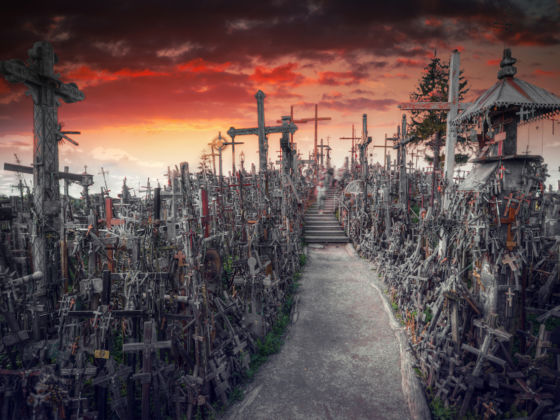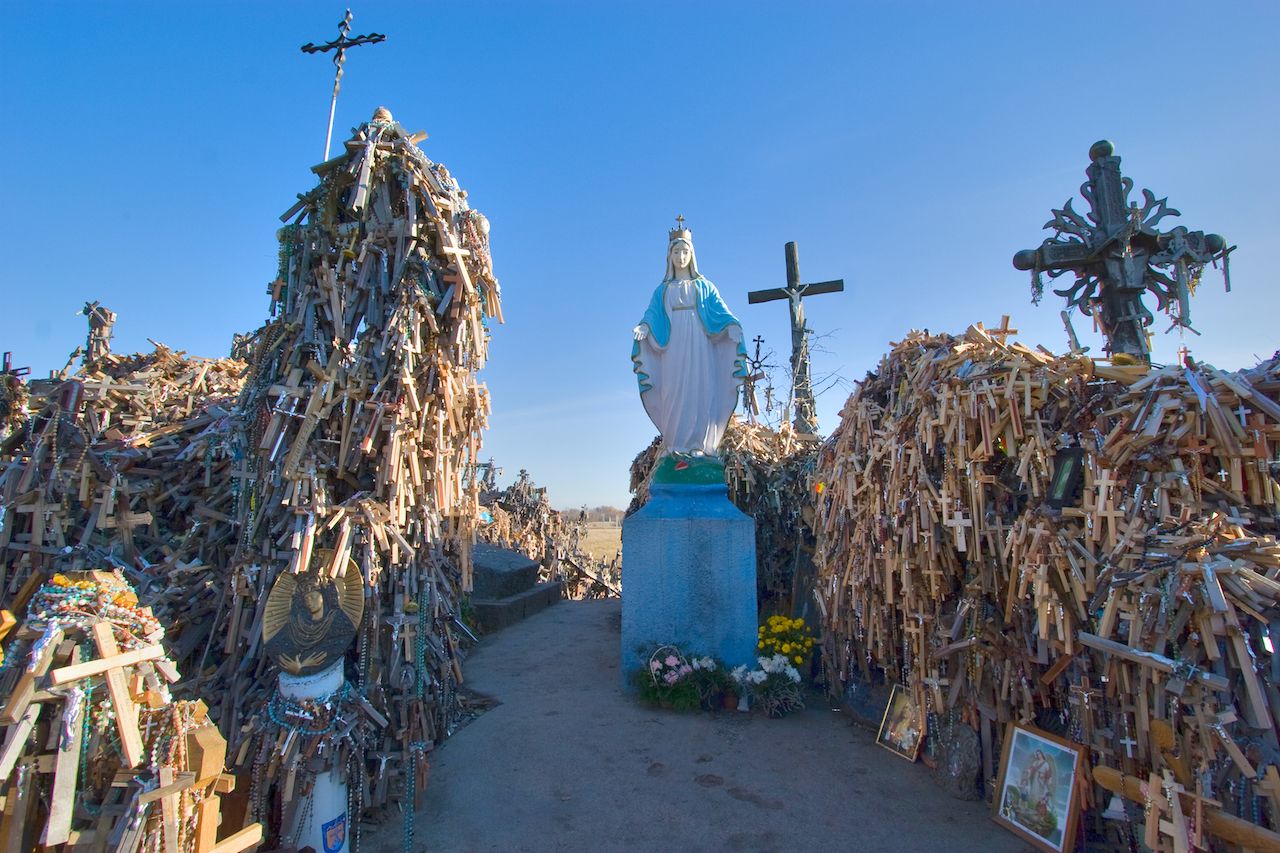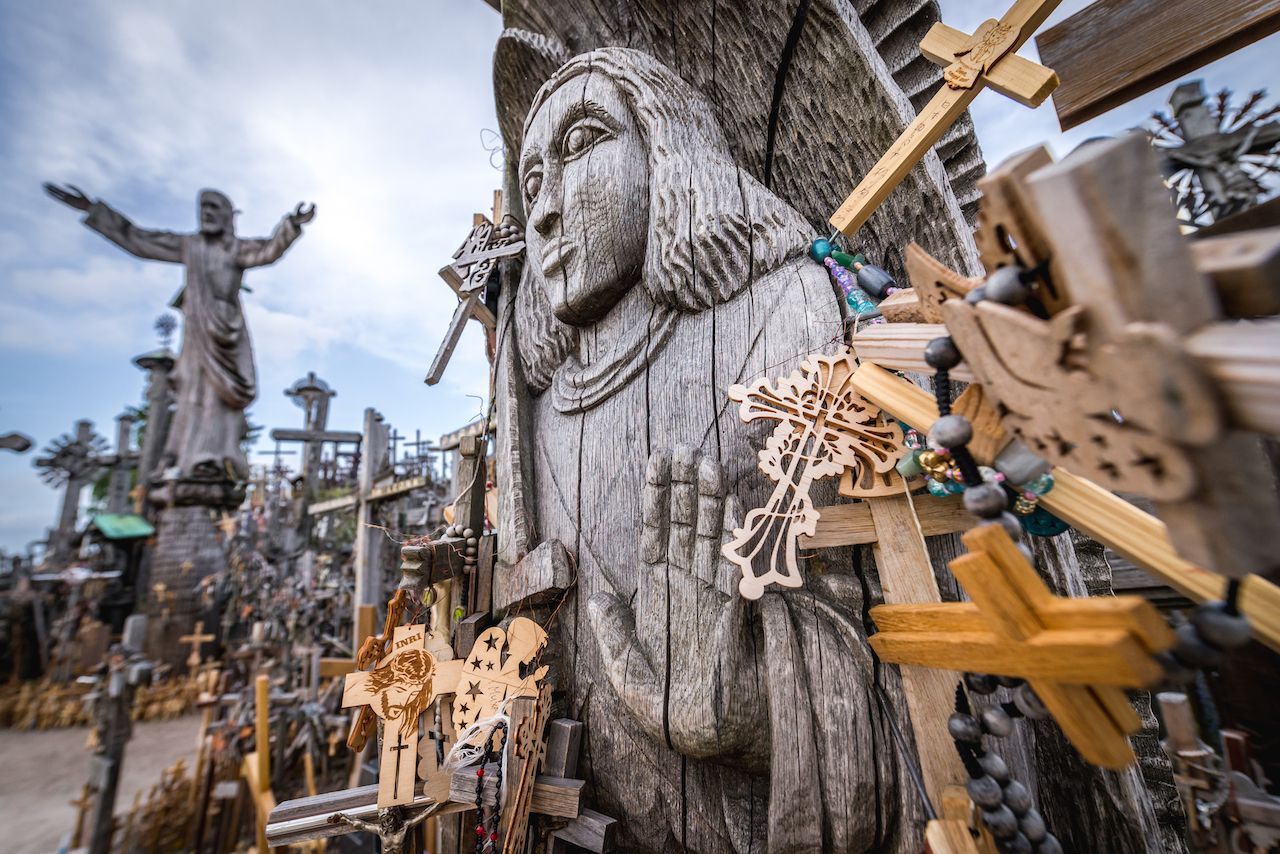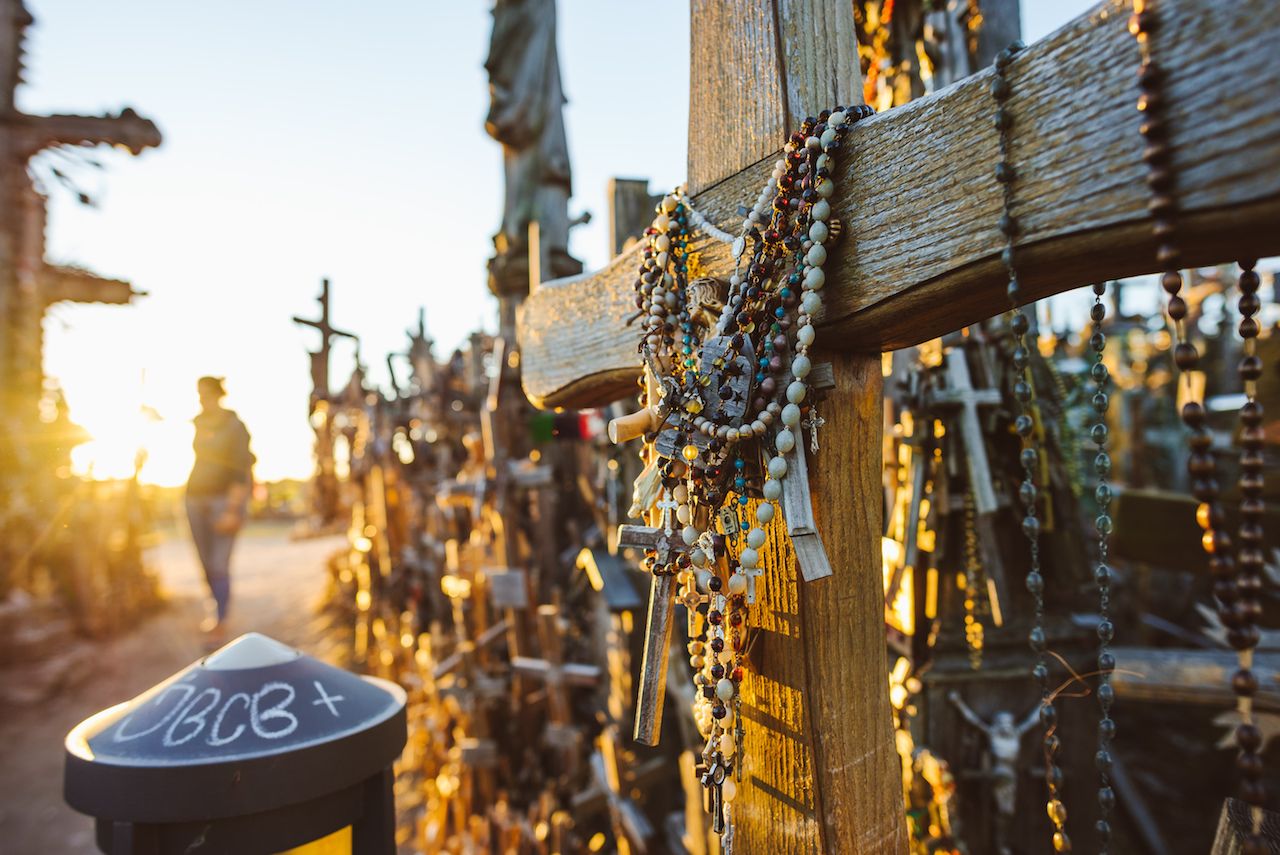If the thought of an eerie walk through hundreds of thousands of crosses, pegged haphazardly into the ground on an ominous hilltop in rural Lithuania, hits the perfect amount of macabre for your Halloween bucket list, you’re in for a treat.
Lithuania’s Hill of Crosses may be creepy, but it has been an important pilgrimage site for more than 150 years. Over its history, it has been a controversial destination and has faced frequent demolitions by Soviet forces, who suppressed all forms of religion. But since the country’s independence in 1990, the hill is here to stay, and it’s currently seeing reinvigoration as a popular dark tourism site that’s equal parts enthralling and chilling.





